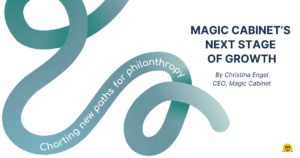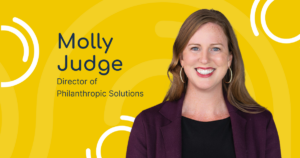In our first four years, Magic Cabinet initiated 18 cohorts in the Puget Sound and San Francisco Bay Area. Each cohort — comprised of three nonprofits — convenes for up to five years to share wisdom, offer feedback, and collectively decide how to divide $2.5 million in capacity-building grant funds. Similar to any business, these grants are an investment in the tools, resources, and systems that will ensure the long-term sustainability of each nonprofit as they build lasting community change.
Many funders primarily invest in programmatic work, which often creates a funding gap for organizational infrastructure needs. Magic Cabinet aims to fill this gap, supporting our nonprofit partners with a sustainable runway to innovate and iterate while strengthening the organization’s ability to deliver on their mission.
Trends From Our First Year of Partnership
After analyzing data from Magic Cabinet’s first 18 Cohorts, we identified a notable pattern in grant requests during the first year of partnership. Over half of our nonprofit partners introduced proposals geared toward recruitment or retention needs. Collectively, these proposals comprised 21 percent of all grant requests in their first cohort year. New hires were a large part of our partners’ capacity-building work, making up 44 percent of all recruitment and retention-related initiatives.
18 Cohorts consisting of 48
nonprofit partners

11 Cohorts requested Recruitment and Retention Grants in Year One

44% of those grant requests
were for new hires


Additionally, these initiatives included expanded benefits (e.g. stipends, staff bonuses, and retirement contributions) to help nonprofits retain staff, reduce turnover, and remain competitive within the sector. Many of our nonprofit partners also prioritized professional development and wellness initiatives for their teams, including continuing education and sabbaticals.
“This funding enables us to hire more staff. The more staff that we have to do one-on-one interaction with our students, the stronger the students are. When one person is trying to work with 70 students, that's very hard to do, but if you split that into two, suddenly it becomes manageable and doable. Hiring additional people makes a world of difference to the students that we're working with."
- Magic Cabinet Nonprofit Partner
As nonprofits continue to strengthen their organizational capacity, flexible funding becomes a vital investment in their teams and the communities they serve. Nonprofits know where they want to take their work strategically but rarely have the time or resources to do so. We invite other funders to explore a participatory approach that shifts power to grantees, centers their expertise, and creates opportunities to fill their needs and build resilient teams for a sustainable future.



